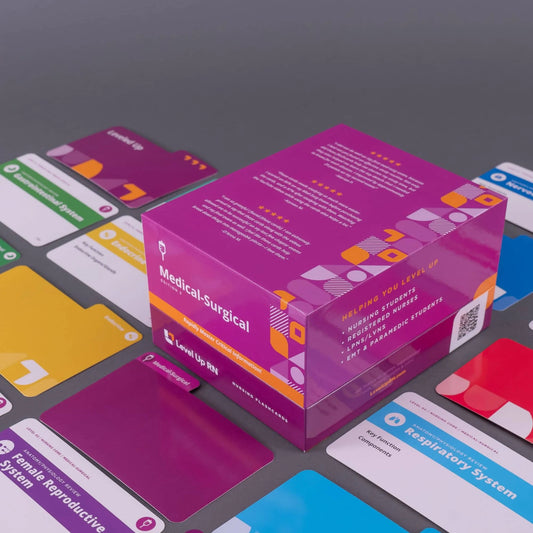Med-Surg - Cardiovascular System, part 17: Angina
Updated: Cathy ParkesAngina, including the pathophysiology, risk factors, diagnosis, treatment, and patient teaching associated with angina. The difference in symptoms between angina and myocardial infarction.
Full Transcript: Med-Surg - Cardiovascular System, part 17: Angina
Full Transcript: Med-Surg - Cardiovascular System, part 17: Angina
Hi. I'm Cathy with Level Up RN. In this video, we are going to talk about angina. And at the end of the video, I'm going to give you guys a little quiz to test your knowledge of some of the key facts I'll be covering in this video. So definitely stay tuned for that. And if you have our Level Up RN medical-surgical nursing flashcards, pull those out so you can follow along with me.
Angina is chest pain due to ischemic heart disease.
So the pathophysiology behind angina is that we have atherosclerosis, the formation of plaque on the arterial walls such that we have narrowing or blockage of blood flow through the coronary artery, and this decreases the amount of oxygen that the heart is getting, which causes that chest pain.
There are three different types of angina.
We have stable angina, which is where the patient has chest pain that occurs with exercise and is relieved with nitroglycerin or by resting.
Then we have unstable angina, which is where the chest pain occurs with exercise or with rest, and over time, this pain will increase in duration, frequency, or severity.
And then finally, we have variant angina, which is caused by spasming of the coronary artery. And with variant angina, chest pain will occur at rest.
In terms of differentiating angina from a myocardial infarction or MI, if the patient has chest pain that is unrelieved by rest or the administration of nitroglycerin, and if that chest pain lasts more than 30 minutes, then that is indicative of an MI versus just angina. In addition, MIs often have other symptoms, such as shortness of breath, nausea, and vomiting, as well as diaphoresis.
Risk factors associated with angina include older age, family history, immobility, as well as heart disease and hypertension and obesity and diabetes as well.
Diagnostic tests that can be used include an EKG, a stress test, as well as a coronary angiogram.
Terms of medications used to treat angina. Sublingual nitroglycerin is going to be an important one to remember. We need to provide the patient with specific instructions on how to use this medication. So they can take up to three tablets for chest pain. So when they're having chest pain, they should stop any activity and rest. They can put one tablet underneath their tongue and then wait five minutes. If the pain is unrelieved, they should call 911, and then they can put a second pill under their tongue. Wait five minutes again. If the pain is still unrelieved, they can put a third tablet under their tongue. Other medications used to treat angina include antihypertensive agents such as beta-blockers and calcium-channel blockers. Anticoagulants and statins are also used.
In terms of patient teaching, we want to advise them to consume a heart-healthy diet, they should lose weight if applicable, and they should reduce their stress if possible. And if they use tobacco products, they should definitely stop using those.
All right. It's quiz time. I have three questions for you. What type of angina occurs with exercise or at rest and increases in duration, frequency, or severity over time? The answer is unstable angina.
Question number two. Chest pain unrelieved by rest or nitroglycerin and lasting more than 30 minutes is indicative of what? The answer is a myocardial infarction. Question number three, how many nitroglycerin tablets can be taken for angina? The answer is up to three. And if you recall, they put the first one underneath their tongue. Wait five minutes. If their pain is unrelieved, they need to call 911, then they can put the second tablet under their tongue. Wait five minutes again. And if no relief, they can do a third tablet.
Okay. I hope this video has been helpful. If so, be sure to like this video and leave me a comment, because I always love to hear from people who watch my videos. Take care and good luck with studying.


